Debt can feel like that unwelcome guest who just won’t leave the party. It lurks in the corner, draining your energy and stealing your joy. Thankfully, there’s hope! Whether it’s credit card debt, student loans, or that mysterious loan from Uncle Bob, understanding debt relief options can help anyone reclaim their financial freedom.
Table of Contents
ToggleOverview of Debt Relief Options
Debt relief options offer various strategies to manage and reduce financial burdens. Individuals facing overwhelming debt can explore solutions tailored to their circumstances. These options include debt settlement, where debtors negotiate a lower payout, and debt consolidation, which combines multiple debts into a single loan, simplifying payments.
Bankruptcy serves as another pathway, providing a legal approach to discharge or reorganize debt. Under Chapter 7, individuals can eliminate unsecured debts like credit card bills, while Chapter 13 allows for a repayment plan over several years. Nonprofit credit counseling plays a crucial role, helping people develop budgets and personalized repayment plans.
Personal loans might also act as a solution for consolidating existing debt, often at lower interest rates. Some financial institutions offer hardship programs, allowing temporarily reduced payments for those in distress. Home equity loans provide another option, leveraging property equity to pay off higher-interest debts.
When considering these options, individuals should evaluate their long-term financial goals and current circumstances. Assessment of interest rates, fees, and potential impacts on credit scores is essential. It’s beneficial to consult with financial advisors or credit counselors for personalized advice tailored to unique situations. Each option has specific eligibility criteria and consequences, requiring thorough understanding before making decisions.
Types of Debt Relief Options

Debt relief options provide various methods to manage financial burdens. Understanding these options allows individuals to choose the best path toward financial recovery.
Debt Consolidation
Debt consolidation involves merging multiple debts into one single loan. This strategy streamlines payments and often results in lower interest rates. Individuals seeking easier management of their finances find this option appealing. Approval requirements typically include good credit scores or reliable income. Many financial institutions offer products tailored for consolidation, such as personal loans or home equity lines of credit. This approach simplifies tracking but can lead to longer repayment terms.
Debt Settlement
Debt settlement focuses on negotiating lower balances with creditors. Through this process, individuals aim to pay a lump sum that’s significantly less than their original debt. Creditors often agree to this, especially if payments are falling behind. Negotiations usually occur through debt settlement companies or directly with creditors. Successful settlements can lead to substantial savings, but they also impact credit scores negatively. It’s essential to fully understand the risks involved before pursuing this strategy.
Credit Counseling
Credit counseling provides individuals with valuable resources and guidance. Professionals assist in creating budgets and debt management plans. Sessions may include assessing financial situations and educating individuals on effective money management. Typically offered by nonprofit organizations, credit counseling services come at low or no cost. Clients receive personalized plans that align with their financial goals. Utilizing credit counseling can help regain control of finances without severe repercussions to credit scores.
Bankruptcy
Bankruptcy serves as a legal remedy for overwhelming debt situations. Individuals can file under Chapter 7 or Chapter 13, depending on their financial circumstances. Filing for bankruptcy can discharge unsecured debts or reorganize payment plans over several years. Significant limitations include the impact on credit scores and eligibility criteria based on income levels. This option provides a potential fresh start for those unable to meet their financial obligations. Understanding the long-term consequences is crucial before considering this alternative.
Pros and Cons of Each Option
Each debt relief option presents distinct advantages and potential drawbacks. It’s important to weigh these factors carefully before choosing a path.
Benefits of Debt Relief Options
Debt settlement can significantly reduce the total amount owed, offering a way to pay off debts more quickly. Consolidation simplifies finances by merging multiple payments into one, reducing stress. Credit counseling provides invaluable support, helping individuals develop effective budgets and action plans at low costs. Bankruptcy offers a legal reset for those overwhelmed by debt, either discharging or reorganizing financial obligations. These options enhance financial stability, allowing for healthier future financial decisions.
Risks and Downsides
Debt settlement may lead to adverse impacts on credit scores, affecting future borrowing potential. Consolidating debts could result in longer repayment periods, which might increase the total interest paid. Credit counseling sometimes lacks the regulatory oversight necessary for protection, making it vital to choose reputable organizations. Bankruptcy carries significant long-term ramifications, including diminished creditworthiness. Each option’s eligibility requirements may also restrict access, making it essential to evaluate personal circumstances thoroughly.
How to Choose the Right Debt Relief Option
Assessing individual financial situations is crucial in selecting the appropriate debt relief option. Begin by evaluating total debt amounts and types, including credit card balances and student loans. Understanding monthly income and expenses provides insight into which options are feasible.
Identifying long-term financial goals helps narrow choices. If the goal is to improve credit scores, options like debt settlement may not align due to potential negative impacts. Conversely, debt consolidation often simplifies payments, making it a strategic choice for managing multiple debts.
Researching the eligibility criteria for each option proves beneficial. For instance, debt consolidation typically requires good credit scores, while bankruptcy offers pathways for those with overwhelming financial burden. Consulting with financial advisors or credit counselors ensures informed decisions, as they offer personalized assessments based on unique circumstances.
Exploring the pros and cons of each strategy aids in decision-making. Some may prioritize lower monthly payments from consolidation, while others might value the legal reset offered by bankruptcy. Comparing interest rates becomes essential, as lower rates can significantly affect repayment timelines.
Considering the potential impact on mental well-being contributes to overall satisfaction with choices made. Debt relief options can alleviate stress, allowing for a focus on future financial health. Creating a list of priorities further clarifies which debt relief method aligns best with individual needs and circumstances.
Navigating the complexities of debt can feel overwhelming but understanding available relief options is crucial for reclaiming financial stability. Each strategy offers unique benefits and challenges tailored to different situations. Individuals should take the time to assess their financial landscape and determine which approach aligns with their long-term goals.
Whether it’s debt consolidation for simplified payments or exploring bankruptcy for a fresh start, informed decisions can lead to significant improvements in financial health. Seeking advice from financial professionals can provide clarity and support in this journey. Ultimately, choosing the right debt relief option can pave the way toward a brighter financial future.



